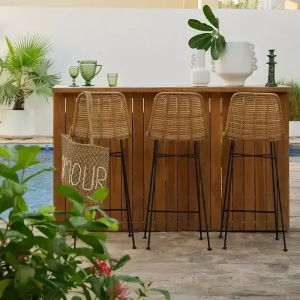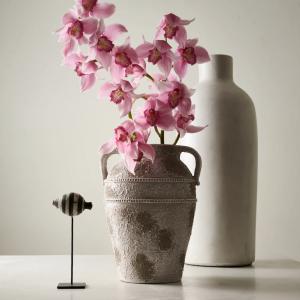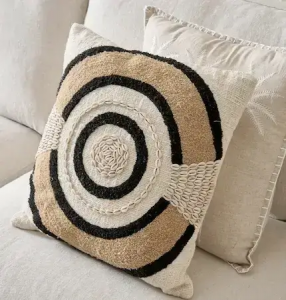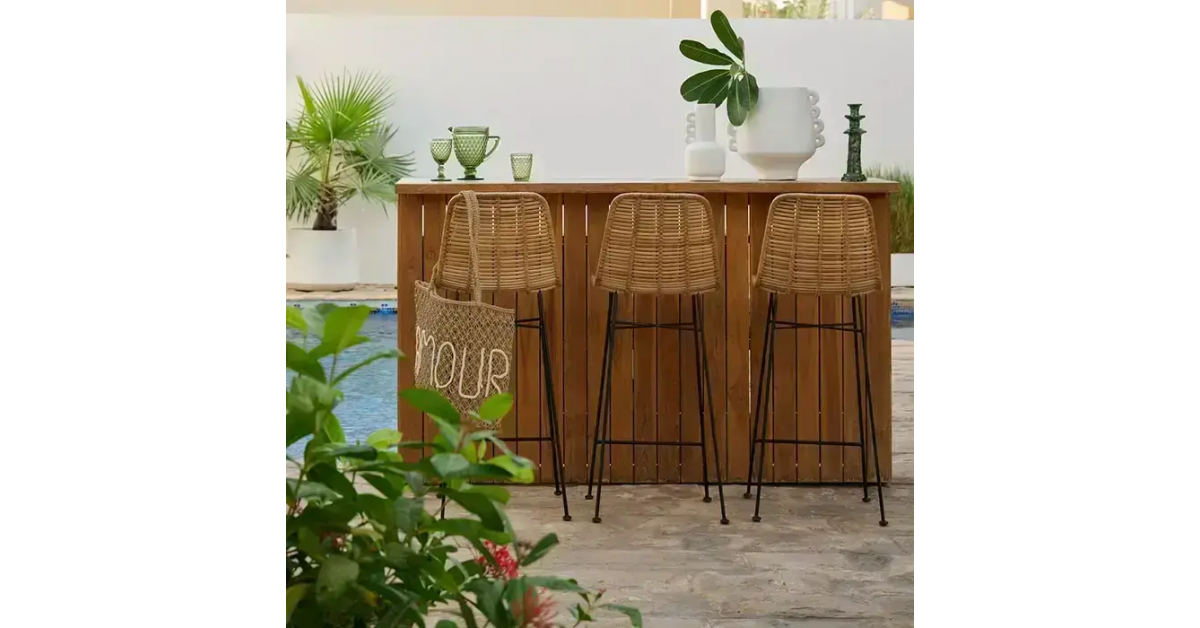
Boho Restaurant Decor with furniture in Bali style and café -accessories

Boho restaurant decoration ideas with Bali style furniture

Bali collection Furniture for Cafés with a natural boho design

Boho Café interior with Bali collection natural furniture
Boho Comfort: Discover Bali Collection Decor for Restaurants and Cafés
Dubai, Al Manara, United Arab Emirates, September 17, 2025 /Inpresswire.com/ – The interior design of restaurants and cafés is as important as the menu. In recent years, the focus of sterile, uniform rooms has shifted to interiors that feel authentic, natural and inviting. This change is particularly visible in the introduction of design elements inspired by Boho, which are strongly based on natural fabrics, earthy color pallets and distinctive wall decoration. A central component of this aesthetics is the use of ethnic ornaments on carpets that bring cultural depth and visual stories in hospitality environments.
This press release examines how these design elements shape customer behavior, why they are gained in popularity in the café and restaurant owner and how they match wider trends in terms of sustainability and cultural connection.
The attractiveness of the Boho style in the hospitality area
The popularity of cafes and boho-style restaurants reflects a broader social change. In urban environments, especially developing cities like Dubai, people are looking for rooms that offer a feeling of calm and familiarity. Boho interior offer this by combining natural materials, tactile textures and warm tones.
Psychological studies indicate that natural surfaces and soft colors reduce the stress and encourage guests to relax. If visitors feel comfortable, they stay longer, order more and return more often. These effects lead to a higher satisfaction of the guests and a stronger mouth production, two important success drivers in the competitive guest sector.
Boho interior are not only aesthetic, but also practical. They create atmospheres associated with vacation, leisure and emotional connection. Ethnic influences that are embedded in the design – whether ethnic ornaments on carpets or traditional handmade wall art – take a unique cultural dimension that helps to differ from competitors.
The role of natural substances and materials
The basis of Boho interior lies in the use of natural fabrics and raw materials. Rattan, bamboo and sustainable wood are widespread for their longevity under commercial conditions. These materials do not lose their shape after years of strong use and can easily be maintained without specialized cleaning agents.
Key materials in the hospitality interior
Rattan: Flexible, light and natural elastic, make chairs and chairs comfortable for longer seating.
Bamboo: A renewable material with natural antibacterial properties that ripens quickly and withstands high loads.
Sustainable wood: stable against moisture and temperature changes, often treated to resist insects and mushrooms.
Natural fabrics: linen, cotton and wool enable “breathing” and maintaining the pleasant level of humidity and remain pleasant at the same time.
Hand -woven textures add another level of tactile engagement. The guests often interact with these surfaces – along the hands along woven chairs or pillows – which creates the subconscious attachment to the room. This emotional bond is valuable for commercial facilities because it promotes loyalty and repeated visits.
Patterns, color pallets and cultural depth
Colors and patterns influence how the guests perceive a room. The Boho style favors earthy tones -, brown, steamed green and creamy white – as the basis. These shades are then accentuated with lighter tropical colors such as corals, turquoise or terracotta. The result is an interior that feels warm and balanced, with enough deviations to remain visually interesting.
Patterns play an equally significant role. Ethnic ornaments on carpets act as visual anchors and form the design and tell cultural stories. Whether inspired by Balinese motifs, geometries of the Middle East or African web traditions, these ornaments give interior spaces authenticity. They are not only decorative; They serve as the starter talks and deepen the connection of the visitor to the environment.
In the meantime, the wall decoration in the form of woven panels, masks or wooden sculptures reinforces this cultural depth. Well -selected walls create focal points that guide the eye and add the texture to flat surfaces. Together, these elements transform a restaurant interior into more than just one dining area – it becomes an experience.
The functionality meets aesthetics in furniture design
One of the most common challenges in the interior of hospitality is the balance of style with functionality. Owners often hesitate between the selection of visually attractive furniture that wears out quickly or practical objects that have no character. The integration of natural fabrics and durable structures offers a solution.
Furniture that was developed with regard to modularity enables flexible layouts. Tables can be summarized for larger groups, stacked stacked or stored chairs, and the entire seat arrangement that are adapted to daily needs. A high durability ensures that the furniture maintains their original look even with strong use – often hundreds of visitors per day.
This balance between aesthetics and function enables restaurants to present an inviting room and at the same time manage operational efficiency.
Seating comfort and ergonomics
Comfortable seats have a direct impact on how long guests stay in a café or restaurant. Chairs with anatomical brawlings, breathable fabrics and durable fillers expand the average duration of a visit. Soft pillows and removable covers help ensure that seasonal updates or quick cleaning are made possible.
Different sitting types – bear chairs, low chairs, sofas – – a variety for different guest requirements. Some visitors prefer to work on laptops, while others want to have long conversations with friends. By providing flexible options, the owners, including rooms, create several purposes all day.
Flexible layouts and adaptive rooms
The event locations of the hospitality have to hire different scenarios: business meetings in the morning, family meals in the afternoon and romantic dinner in the evening. Boho interior, improved with wall decoration and natural partitions, enable this versatility.
Principles such as zoning with plants, adaptation of the lighting and use of modular furniture ensure that the rooms can quickly adapt. This adaptability is not only functional, but also improves the perception of care and detail that visitors appreciate.
Accessories and decorative elements
Decorative details complete the Boho atmosphere. Wall decoration in the form of woven lampshades, framed textiles or sculptural panels gives the interior dimension and identity. The lighting, especially warm tones (approx. 2700,000), contributes to a cozy atmosphere that is well photographed and shares social media.
Other accessories such as pillows, carpets and living plants serve both practical and aesthetic purposes. Carpets with ethnic ornaments help to define zones within the room and at the same time absorb the sound and improve acoustics. Natural fabrics in pillows and curtains improve comfort and visual warmth.
Such details together create an environment that appeals to demographic data about the young visitors who are looking for older guests in Instagram-worthy moments who appreciate the cultural design.
Sustainability and long -term value
Sustainability has exceeded a niche care to a mainstream request. Younger generations in particular select facilities that match their ambient values. The use of renewable materials such as bamboo and rattan shows ecological responsibility and at the same time ensures long -term durability.
Important sustainability factors
Fast renewability: bamboo grows quickly and regenerates without reproducing.
Carbon neutrality: Bamboo groves absorb considerable amounts of CO₂, which improves air quality.
Chemical -free growth: the natural resistance to pests reduces the dependence on pesticides.
Biological breakdown: natural fabrics and fibers decompose faster than synthetic alternatives, which reduces the environmental impact.
For restaurant owners, investments in sustainable materials are also economically sensible. Furniture and decor last longer, require a lower frequent exchange and, despite strong use, receive the aesthetic quality. This lowers the operating costs and improves brand reputation.
Diploma
The Hospitality Design has developed from a secondary consideration to a central element of business success. Guests no longer choose cafes and restaurants for food. They also seek atmosphere, authenticity and emotional connection.
The integration of natural fabrics, ethnic ornaments into carpets and expressive wall decor is more than a design trend. It reflects a cultural and ecological change that feels sustainable, personally and unforgettable. For restaurant owners, these elements not only offer an aesthetic value, but also measurable advantages in satisfaction, loyalty and long -term operational savings.
If the hospitality sector continues to grow, the emphasis on the design, which is rooted in natural and cultural elements, will probably strengthen itself. Facilities that adapt to this shift will not only attract guests, but also create experiences that keep up long after the end of the food.
Carol Sukkar
Home and Soul Furnic Trading LLC
+971 56 112 1444
Send us an e -mail here
Visit us on social media:
LinkedIn
X
Facebook
Exclusion:
A presswire offers this news content “What is” without guarantee of any kind. We do not assume any responsibility or liability for the correctness, content, images, videos, licenses, completeness, legality or reliability of the information contained in this article. If you have complaints or copyright problems related to this article, please contact the author mentioned above.

